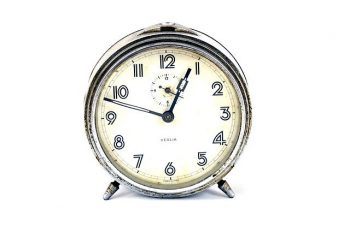Should You Be Awake for a Facelift?
 Doctors keep working on ways to streamline facelift surgery for their patients. The motivation is to respond to demand for rejuvenation that’s effective but not too expensive and not too invasive, and thus attract more patients to the practice.
Doctors keep working on ways to streamline facelift surgery for their patients. The motivation is to respond to demand for rejuvenation that’s effective but not too expensive and not too invasive, and thus attract more patients to the practice.
One of the latest trends is the “awake” facelift. From New York to Florida to Los Angeles, doctors offer variations on the procedure that usually entails just local anesthetic and incisions around the ears. The price tag is generally less than that of a full facelift performed under sedation, and patients can be enthusiastic about getting up and walking out the door after surgery.
While this approach might work well for some select patients, there are drawbacks too. If you’re considering such a procedure, here are some things to think about.
Comfort
Some people have a high pain threshold; others don’t. And although the combination of medication to relax you with local anesthesia may be described as adequate for controlling discomfort, it may not be so for everyone. One patient reviewer wrote this about her experience:
Pay to be knocked out unless you have a high tolerance for pain. I have a low tolerance (as I learned to my dismay). I was awake and felt tremendous pain towards the beginning and the end. The end in particular was awful.
Similarly, some people are more squeamish than others. If you have any reason to think that the sights, sounds, smells and sensations of surgery on your face may be disturbing to you, think twice before opting to be awake.
Safety
Building on the input about your comfort, there’s a safety aspect you may not think about until it’s too late. Should you decide during your surgery that you would rather be asleep, or should your physician encounter an issue, it’s likely that you won’t be able to be put “under” quickly or perhaps at all. Your cosmetic surgeon will probably not have an anesthesiologist on hand to administer the medication—that’s the prime way to keep costs down for these awake procedures.
Facelifts performed with local anesthesia are often billed as safer than those done under general anesthesia. But to a healthy person in the hands of a surgeon certified by the American Board of Plastic Surgery (ABPS) and a professional anesthesiologist, the risk of general anesthesia is tiny. And if the patient prefers to be lightly asleep and breathe on his or her own, twilight sedation can be used. In fact, we perform almost every one of our New York facelifts under IV (or twilight) sedation.
Recovery
Another claim sometimes made about awake facelift surgery is that people recover faster. The first few hours after surgery may indeed be easier for a patient who has not had general anesthesia—although twilight sedation also eliminates the general anesthesia “hangover.”
The weeks long recovery process following a facelift is a direct result of the surgical technique used, not the anesthesia. The more and longer the incisions, the deeper into the tissues your surgeon reaches and the more areas of the face addressed, the longer the recovery. There’s just no way to minimize the body’s response to trauma—tissues bleed and swell. The relationship to the type of anesthesia used is minimal, if any.
Results
The long-term outcome of facial plastic surgery is a function of the surgeon’s experience and skill, and of how extensive the procedure is. Many doctors who offer awake facelifts perform what could be termed a mini facelift—addressing just a portion of the face or pulling just upper layers of tissue. If you’re a younger patient and this is appropriate for you, it’s possible the results will be fine.
Many people, however, need more than just a mini facelift to realize the full potential of facial plastic surgery. Scores of patients on the Internet tell stories of less than satisfying results. One person who opted for a full facelift said that some of her friends who chose mini-lifts “had revisions done in a couple of years and ultimately spent more money than I did.”
A Final Note
The fact that cosmetic surgeons continually seek ways to make their patients happy with less cost and downtime is not a bad thing in itself. You may find several plastic surgeons certified by the American Board of Plastic Surgery who offer more than one type of facelift. If you consult one of them about anything less than a full facelift, be sure to press for details about the results you can expect and why you might be a candidate for a less extensive procedure.
And note that when it comes to awake facelifts and other forms of facial plastic surgery that make attractive promises, you’ll find these options often promoted by doctors who are not ABPS certified. This should be a big red light. You deserve to have your procedure designed by someone with extensive training and experience, a professional who can educate you and help you choose wisely from a menu of options.
These days, there are so many options for facial rejuvenation—it can be confusing to separate fact from fiction. If we can help further, don’t hesitate to email us.